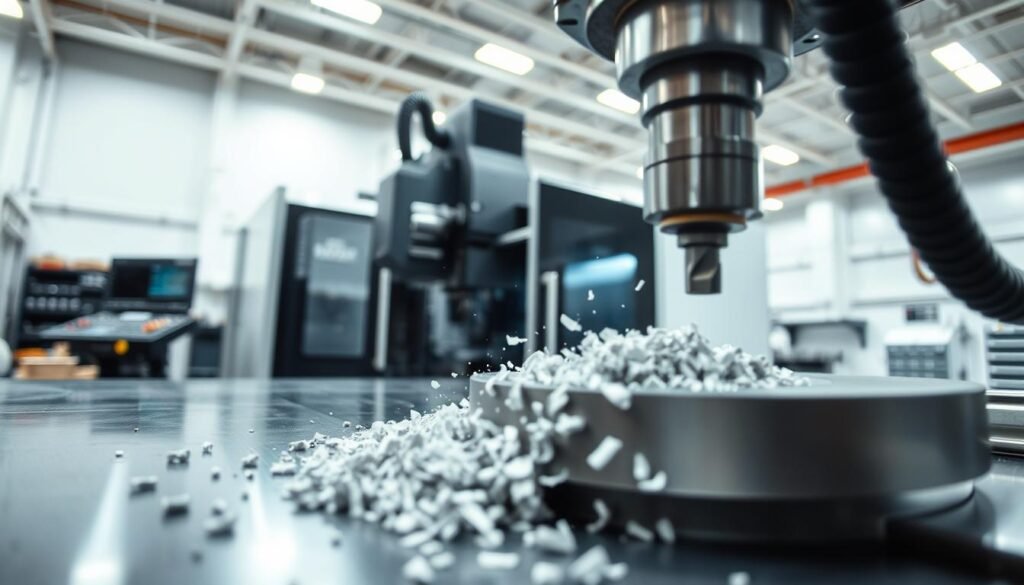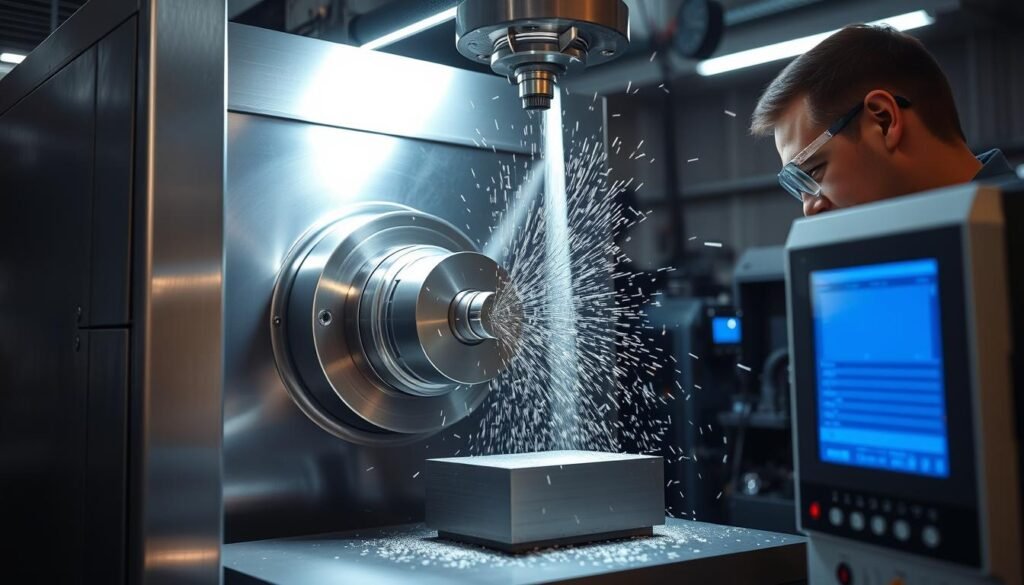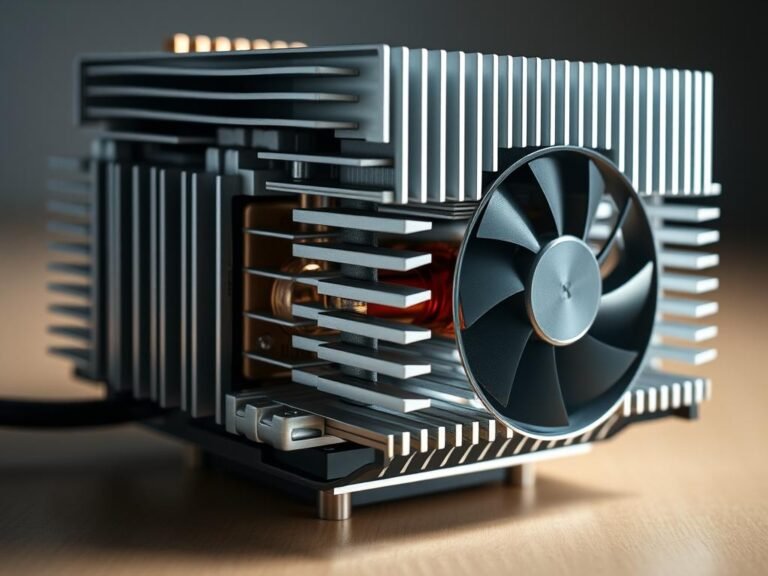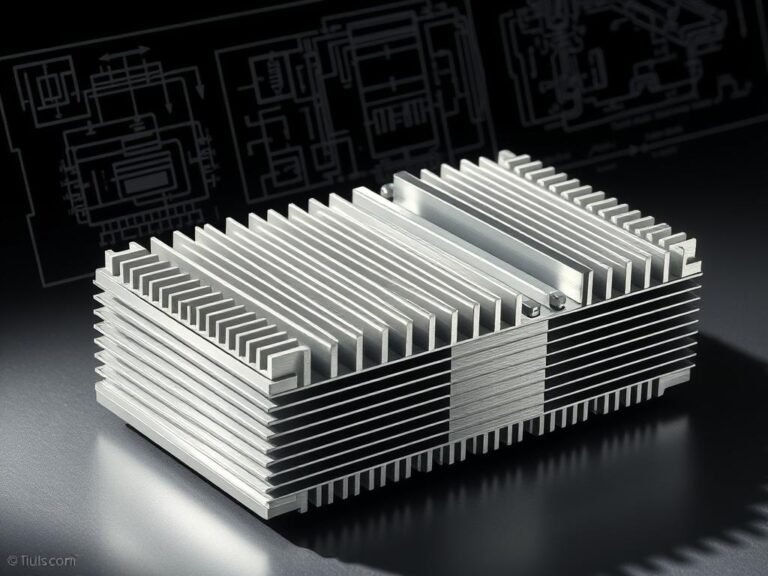CNC milling is an advanced computer-controlled manufacturing technology that enables precise machining of workpieces. This innovative technology uses computer-controlled machines to create complex shapes and structures with the highest accuracy.
Precision machining through CNC milling is revolutionizing the modern manufacturing industry. Computer-controlled systems enable engineers and production experts to produce highly complex workpieces from various materials such as metal, plastic, and wood.
Industrial applications of CNC milling range from the automotive industry to aerospace engineering. The technology enables precise and repeatable manufacturing of components with minimal tolerances.
Key findings
- CNC milling uses computer-controlled precision technology
- Enables highly precise processing of various materials
- Revolutionizes industrial manufacturing processes
- Reduces human error rates
- Increases production efficiency and cost-effectiveness
How CNC milling machines work
The CNC control system forms the core of modern milling machines and enables precise numerical control of the manufacturing process. This advanced technology converts digital design data into exact mechanical movements.

The operation of a CNC milling machine is based on several key components:
- Computer-controlled control unit
- Precise movement axes (X, Y, Z)
- High-performance tools
- Software-controlled programming
The process of numerical control begins with creating a digital 3D model. The CNC control interprets this data and converts it into exact movement instructions for the milling machine. Each axis can be controlled independently, enabling complex and highly precise machining.
"CNC technology revolutionizes modern manufacturing in the United States through unparalleled precision and efficiency."
The main advantages of the CNC milling machine include:
- Highly accurate machining
- Repeatable results
- Minimal manual intervention
- Complex geometric shapes
Modern CNC control systems enable complex coordination between software, machine components, and tools, making highly precise industrial manufacturing processes possible.
Process flow in CNC milling
The CNC milling process is a complex procedure that requires precise planning and execution. From the initial digital design to the final surface finishing, each workpiece goes through several critical phases.
CAD/CAM-Softwareentwicklung
The foundation of any CNC machining lies in CAD/CAM software. Here, digital 3D models are created and converted into machine-readable programming codes. Important steps include:
- Geometric modeling
- Generation of NC programs
- Simulation of the processing strategy
Machine preparation
Tool preparation is crucial for accurate results. Technicians select suitable milling tools and define optimal milling parameters based on:
- Workpiece material
- Geometric requirements
- Desired surface quality
Milling operation
During the actual machining process, the CNC machine transforms digital instructions into precise mechanical movements.
Post-processing
Surface finishing completes the process. Here, workpieces are optimized using techniques such as grinding or polishing to achieve the desired final quality.

"Precision begins in digital planning and ends in perfect mechanical execution."
Key features of CNC milling
CNC milling revolutionizes modern manufacturing technology through several critical features. The precision of this technology allows for extraordinary accuracy in producing complex geometries.
- Highest precision in workpiece machining
- Excellent repeatability of manufacturing processes
- Comprehensive automation of production steps
- Ability to machine complex geometries
Automation plays a central role in CNC milling processes. Computer-controlled systems minimize human error sources and ensure consistent product quality.
| Feature | Description | Advantages |
|---|---|---|
| Precision | High-precision machining | Tolerances up to 0.01 mm |
| Repeatability | Identical workpieces | Consistent quality |
| Complex geometries | Multi-axis machining | Complex shapes possible |
The ability to work with complex geometries distinguishes CNC milling from traditional manufacturing methods. Engineers can now implement designs that were previously considered impossible.
"CNC milling transforms the manufacturing industry through precise and flexible technologies."
By combining precision, repeatability, and automation, CNC milling offers unmatched possibilities for various industries.
Applications of CNC milling
CNC milling has established itself as a key technology in industrial manufacturing. Companies from various sectors use this precise machining method to produce complex components with the highest accuracy. From the automotive industry to medical technology, CNC milling enables efficient and high-quality production of parts.
In prototyping, CNC milling plays a crucial role in product development. Engineers and designers can quickly create functional prototypes and directly manufacture them from various materials such as metal, plastic, or wood. This accelerates innovation processes and significantly reduces development times.
The aerospace industry benefits especially from the precision technology of CNC milling. Highly complex components for aircraft and spacecraft require absolute manufacturing accuracy, which can only be achieved through computer-controlled milling processes. At the same time, this technology supports weight reduction and material optimization in these demanding applications.
Medical technology companies use CNC milling for the production of precision instruments, prostheses, and medical implants. The ability to realize highly complex geometries and custom designs makes this manufacturing technique an indispensable tool for modern medical applications.


